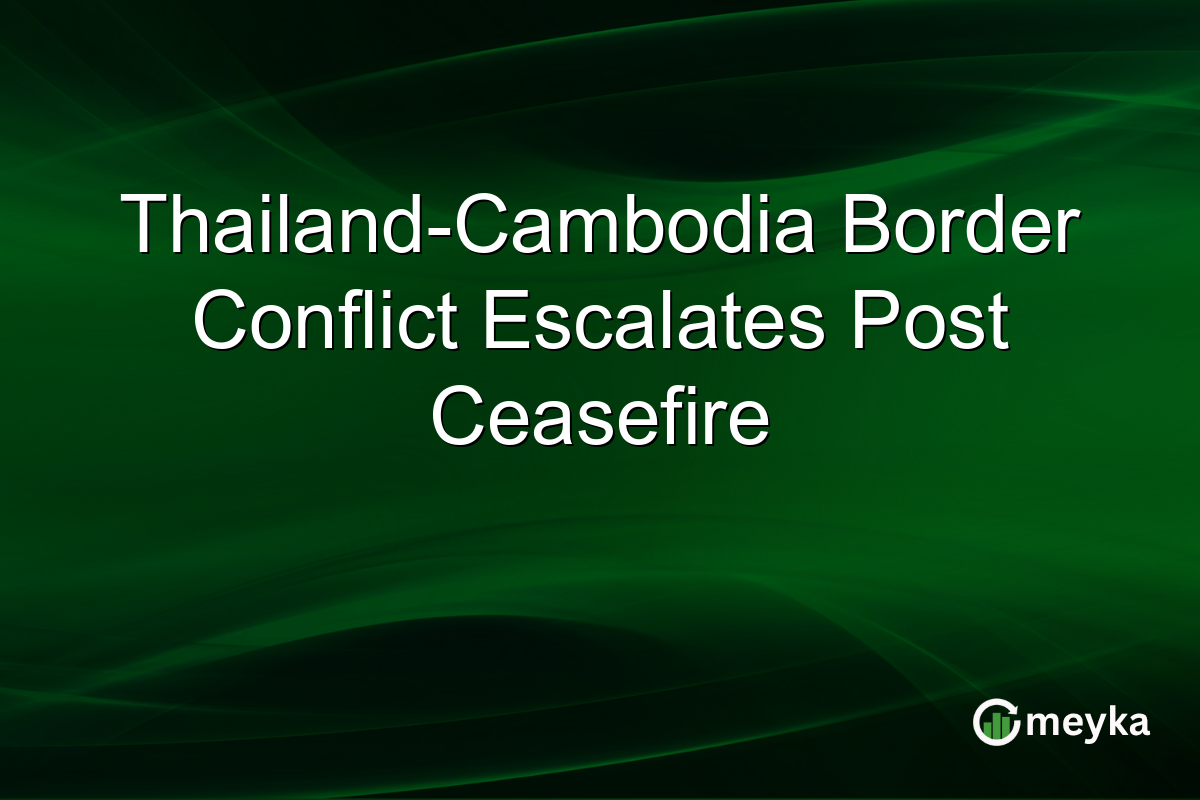Thailand-Cambodia Border Conflict Escalates Post Ceasefire
The Thailand-Cambodia border clash has reignited tensions in Southeast Asia following the collapse of a Trump-backed peace deal. This ceasefire breakdown has worsened relations, leading to confrontations and fatalities along the border. The ensuing geopolitical instability is drawing concern internationally and could impact regional investment strategies.
Background of the Conflict
Historical tensions between Thailand and Cambodia have sporadically heated due to disputed borders and national pride. This latest escalation came after a peace agreement brokered by former President Trump unraveled. The deal, initially hailed as a diplomatic win, failed to address underlying grievances effectively. Some experts suggest unrealistic expectations contributed to its breakdown, citing vague terms within the agreement as a major flaw. [Read more on the peace deal breakdown on Reddit.]
Recent Developments and Military Engagements
The ceasefire collapse has led to multiple skirmishes along the border, including a tragic incident involving a Thai soldier stepping on a landmine. This has heightened military readiness on both sides. Thai officials reported an increased deployment of troops to reinforce security, while Cambodian forces are on high alert. This escalating violence could severely disrupt local economies reliant on cross-border trade and labor movement.
International Reactions and Hun Manet’s Response
International leaders have expressed concern over the escalating crisis. Cambodian Prime Minister Hun Manet has called for renewed peace talks, urging an end to violence through diplomatic means. However, skepticism persists over whether dialogue alone is sufficient given the intensity of the recent clashes. Neighboring nations fear the conflict might complicate regional stability, affecting investment inflows and economic forecasts.
Implications for Regional Investment
The Thailand-Cambodia border clash creates uncertainty that may deter investors looking for stability in Southeast Asia. The region, previously seen as a burgeoning market, now faces setbacks due to geopolitical risks. Analysts suggest monitoring political developments closely, particularly any shifts in military dynamics or international mediations, to gauge the investment climate accurately. This showcases the delicate balance between diplomacy and investment in conflict-prone regions.
Final Thoughts
The rising tensions between Thailand and Cambodia signify broader challenges in maintaining peace in Southeast Asia. The failure of the Trump-backed peace deal reveals weaknesses in addressing deep-seated issues. As military confrontations persist, the impact on regional stability and international relations grows. For investors and policymakers, recognizing the interconnectedness of geopolitical actions and economic repercussions is crucial. Navigating these elements requires a nuanced understanding of both regional dynamics and broader geopolitical landscapes.
FAQs
The tension stems from longstanding disputes over territory and national pride. The collapse of a recent peace deal escalated hostilities, leading to renewed clashes and fatalities.
Local communities face uncertainty as military presence increases. Cross-border trade and daily life are disrupted, affecting livelihoods and regional economies.
International leaders encourage dialogue and new peace talks. However, the effectiveness of such efforts is questioned due to entrenched positions and ongoing skirmishes.
Disclaimer:
The content shared by Meyka AI PTY LTD is solely for research and informational purposes. Meyka is not a financial advisory service, and the information provided should not be considered investment or trading advice.






